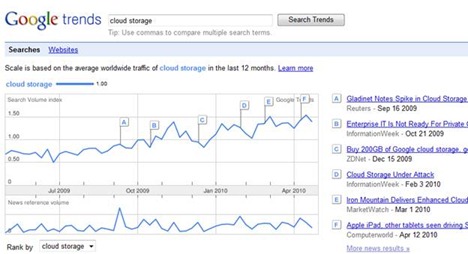Google Storage, Where is the Attack Point?

Yesterday we saw the announcement of Google Storage for Developer from the Google I/O event. A closer look at the Google Storage API revealed that it is similar to Amazon S3’s API. This means direct competition between Google Storage and Amazon S3. Year 2010 is already interesting for the Cloud Storage wars. S3 is still enjoying a commanding lead. Windows Azure came full release. EMC Atmos came full release too at the EMC World earlier this month. Now seven days later the Google Storage came.






